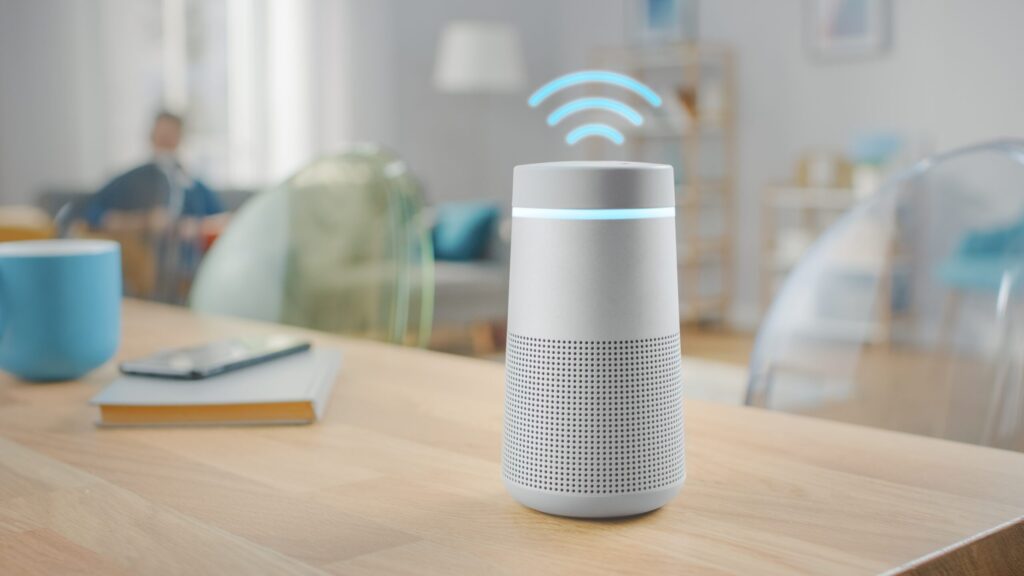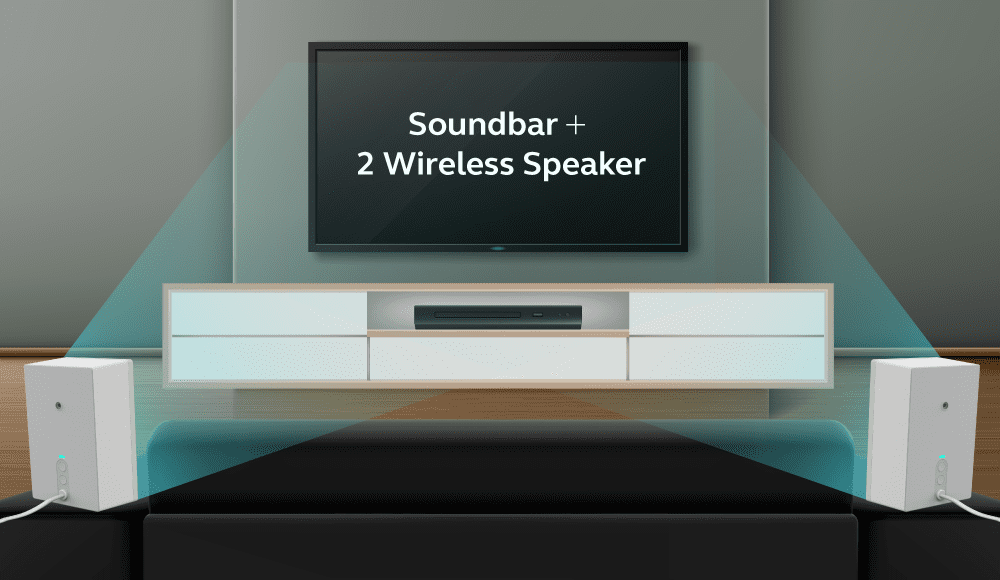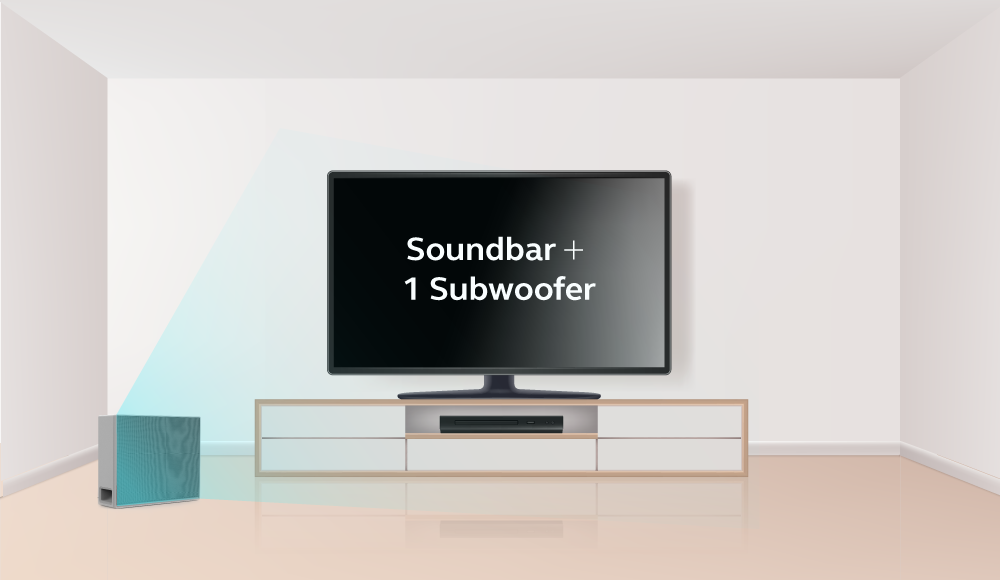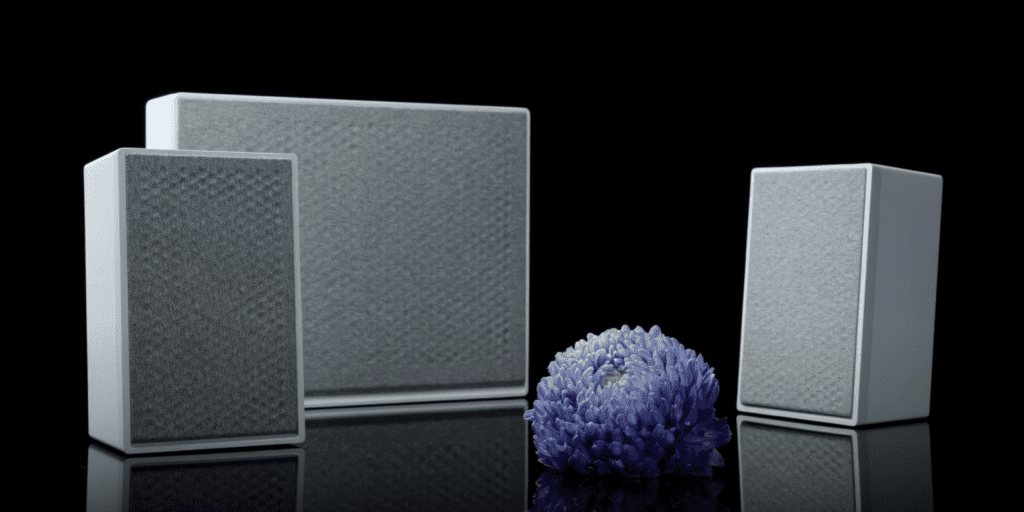The Rise of Wireless Surround Sound System
Although the surround sound system seems like relatively new technology, the first surround sound experiment actually started in the 1930s. The surround sound system was first implemented in Walt Disney’s revolutionary film Fantasia. This application of surround sound is named Fantasound, and is used in the commercial arena. However, Fantasound could not pave its way into broader scales, such as the Broadway theaters and household environments, simply because it was too complex and expensive. In the 1950s, Hollywood developed a more affordable multi-channel sound system, but it did not thrive either.
As technology continued to develop, in 1975, the release of Dolby Stereo marked the rise of the surround sound system. The Dolby Stereo delivered audio through four channels: two speaker channels on the left and right, one center speaker channel, and one surround channel at the sides and the rear placement. The Dolby Stereo successfully created an immersive experience for the audience to enjoy while watching films in the theater. It was until 1982 that people started using surround sound systems in home settings.
With the emergence of Bluetooth and Wi-Fi, the demand for wireless surround sound systems began to grow. As people become more delayed on wireless technologies, on-demand streaming services have also gained popularity in recent years. It has become extremely convenient to watch movies and films at home. Unfortunately, our standard for audio quality grew higher along with this convenience. New developments will likely focus on adding more channels to the surround sound systems.

Soundbar Surround Sound system - Wired Speaker vs. Wireless Speaker
There are two types of speakers that you should know about for your home surround sound system: wired speaker and wireless speaker.
A wired speaker’s most outstanding advantage is its stable sound transmission. Since a wired speaker has cables to transmit sounds, there will be fewer sound transmission issues compared to a wireless speaker. However, wired speakers will inevitably have lines and wires that require sorting and hiding.
While there is a slight advantage for a wired speaker, a wireless speaker, on the other hand, has more advantages. First, a wireless speaker is super easy to set up. All you have to do is connect the wireless speaker through Bluetooth or Wi-Fi. Another advantage is that wireless speakers have fewer cables than wired speakers. Wireless speakers can be further sub-categorized into two types: Bluetooth and Wi-Fi
Wireless Bluetooth Speakers
Bluetooth surround sound speakers are usually battery-operated or rechargeable, whereas Wi-Fi surround sound speakers may still require a power source.
Wireless Wi-Fi Speakers
Wi-Fi systems offer a more fantastic range for connection than Bluetooth surround speakers. However, if your home audio system is meant to be placed in a large room, Wi-Fi surround sound speakers are preferable.
What is the Difference Between Bluetooth Speakers and Wi-Fi Speakers?
When it comes to delivering audio, Bluetooth compresses the sound before sending it, which means you might not get the best quality. On the other hand, Wi-Fi doesn’t compress the audio before transmission, ensuring a higher quality listening experience.
While Wi-Fi surround sound speakers tend to be more reliable and typically come with a higher price tag, Bluetooth speakers are more wallet-friendly and simpler to set up.
Now, when you’re choosing between wired and wireless speakers, there isn’t a straightforward answer on which is better. But if we’re talking about matching the sound quality, if you are not an audiophile, you’ll often find yourself spending a lot more for wireless speakers than you would for wired ones with similar audio quality.

2 Things to Consider Before Buying a Wireless Home Theater Surround Sound System
Location
The location where you build your home theater is the most important thing you have to consider before buying a wireless home theater surround sound system. The further it is from a high-noise area, the less noise interference there will be. The key to creating a complete, immersive experience with your home surround sound system is a quiet space that can help showcase the high-quality sound of speakers.
Space

The ideal space to build your home theater is around 20 feet long by 13 to 15 feet wide. However, the room for home theater should not be smaller than 12 feet by 12 feet. This is because you should have enough space for sound waves to travel, reflect, and resonate. The size of your space will also determine the number of speakers to buy for your home theater.
The guide of building surround sound system with wireless subwoofer speakers
When you are trying to build a home theater system at home, the most important thing is the placement of your wireless speakers. The standard sound system size for a cinema-quality experience is 7.1. The 7.1 surround sound systems include a subwoofer and seven-channel speakers. The channel speakers include one left, one right, two sides, and two rear speakers. If these wireless speakers are placed correctly, you can immerse in a theater-quality experience.
wireless surround sound system 3 easy combinations of soundbar and subwoofer
The standard surround sound system requires budget and space in your home. While some can build a traditional surround sound system, others may be restricted by the price or the space it takes up.
No need to worry! We have prepared 3 combinations of a soundbar(Learn About: What is a soundbar), wireless speakers, and subwoofers for you to build your home theater system. The recommended placements for these combinations are also included.
Soundbar + 2 Wireless Speakers

Scenario: The soundbar is placed under the TV, while the wireless speakers are placed separately behind the couch.
For the speakers behind the couch, you may place one speaker slightly to the left and the other slightly to the right. Try spacing the speakers at an exact distance from where you usually sit. This placement allows sounds to move from left to right and vice versa, balancing the sounds and creating an immersive surround experience.

The best placement for your subwoofer will depend on your room and subwoofer arrangement. Subwoofers are most often placed in the front corner of the room. However, you can always test out different locations to find the best placement that presents the best sound.
Soundbar + 4 Wireless Speakers + 1 Subwoofer

Scenario: The soundbar is placed under the TV, 2 wireless speakers are placed on the left and right sides of the soundbar, the other 2 wireless speakers are placed separately behind the sofa, and the subwoofer is placed on the ground on either side of the TV.
Always remember each speaker at an exact distance from where you sit. It will help to create an immersive sound experience.
The Best soundbar and subwoofer for Wireless Surround sound System
JazzHipster’s Wireless 6 Wi-Fi Speaker

JazzHipter’s Wi-Fi Speaker is a Wi-Fi 6 wireless TV speaker with lower latency, AV synchronization, and has various combinations to the modern lifestyle. The simple, clean design of the speaker can easily adapt to the aesthetics and fashion trends of nowadays.
- The combination of JazzHipter’s TV Speaker and wireless speakers creates 4.0 or 4.1 ATMOS surround sound.
- The combination of JazzHipter’s TV Speaker and wireless subwoofer speaker creates 2.1 ATMOS virtual sound.
Jazz Hipster’s Wi-Fi Speaker specifications:
- Ultra-low Latency <2ms
- Dolby wireless speaker compatibility
- Wi-Fi 6 dual-band
- Bluetooth 5.2 LE Audio for a personal, portable speaker
For more information on JazzHipter’s Wi-Fi Speaker, please visit us at
https://jazzhipster.com/home-theater-speaker/wifi-speaker/
Ask for a sample: jsms@jazzhipster.com.tw




